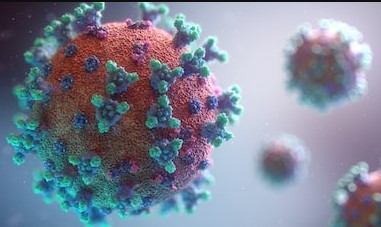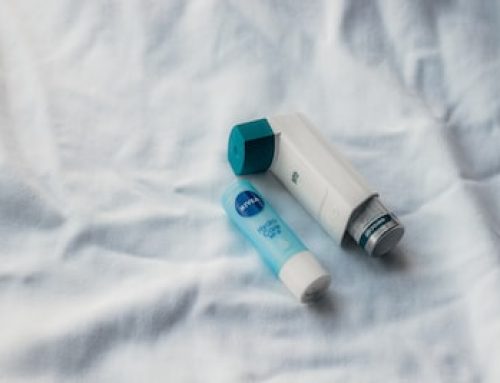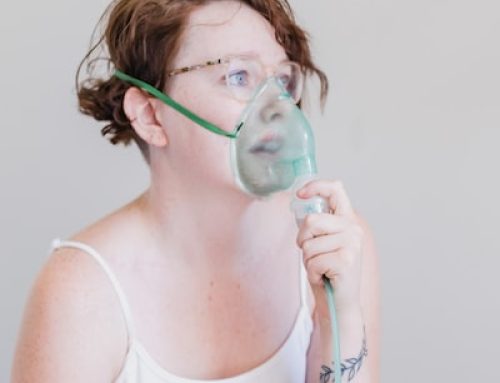COVID-19 severely affects the respiratory system and in about 15% of the cases causes Acute Respiratory Distress Syndrome or ARDS. ARDS is the leading cause of death in patients suffering from COVID-19. However, the cytokine storm elicited by COVID also causes severe damage to many other organs and organ systems.
Infection by SARS-COV-2 causes an elevation in the levels of pro-inflammatory cytokines such as IL-6, IL-17, Tumor Necrosis Factor (TNF)-a, and IL-1 in the bloodstream. This is what is called a Cytokine storm which causes severe inflammation in the respiratory epithelium. The inflammation causes severe damage to the lungs and ARDS ultimately results in total organ failure. The elevated level of GM-CSF colony secreted by atypical T-cells also plays a vital role in the damage to the lungs.
Several works of research indicate that COVID, directly and indirectly, results in brain damage. A hypercoagulable state in the brain causes blood clots in cerebral vessels and causes brain damage. In addition, the neurotoxic effects of the cytokine storm initiated by the pro-inflammatory cytokines disrupt the blood-brain barrier. Hence, the cytokine storm not only causes blood clots in the brain but also can cause neurological symptoms since the integrity of the blood-brain barrier is often compromised as a result of COVID infection.
COVID-19 has also been linked to liver damage. ACE-2 receptors are expressed in the liver and the SARS-COV-2 mediates cytopathic effect via the ACE-2 receptors. Evidence suggests that direct viral invasion is responsible for damage to the liver. Moreover, elevated levels of pro-inflammatory cytokines and inflammatory markers such as C-reactive protein (CRP), IL-2, IL-6, D-Dimer, LDH, Serum Ferritin, etc. also suggest that the cytokine storm causes extensive damage to the liver via inflammation.
Since SARS-COV-2 damages various organs and organ systems via pro-inflammatory cytokine responses, could this be somehow related to long COVID?
Long COVID by definition occurs when patients infected with COVID continue to experience symptoms for four weeks or more. The most common symptoms of long COVID are shortness of breath, brain fog, depression, muscle pain, headache, arrhythmia, fatigue, prolonged fever, etc.
A hypothetical model suggests that people who suffer from long COVID may have a genetic predisposition to be unable to clear out the virus completely from their system. Although the concrete evidence for the cause of long COVID remains elusive, it is suggested that the cytokine storm initiated by initial SARS-COV-2 infection plays a vital role. According to the model, the pro-inflammatory behavior of the immune system leads to local and systemic tissue injury. The resulting viral persistence because of the body’s inability to clear out the virus completely and the constant damage as a result of the inflammation results in prolonged symptoms that do not subside easily.
If you or anyone you know have been battling Long COVID, please contact The Functional Medicine Center for Personalized Care, LLC (www.FxMedCenters.com) at 201-880-8247 or Specialized Therapy Associates at 201-488-6678 for our Integrative Mind-Body Health services. Our Integrative Mind-Body Health services incorporate Acupuncture, Functional Nutrition, IV Nutrition, Health Coaching, Exercise, Yoga, and Mind-Body Psychotherapy to support holistic healing and recovery that helps reduce inflammation.
References:
Bhaskar S, Sinha A, Banach M, Mittoo S, Weissert R, Kass JS, Rajagopal S, Pai AR and Kutty S(2020) Cytokine Storm in COVID-19—Immunopathological Mechanisms, Clinical Considerations, and Therapeutic Approaches: The REPROGRAM Consortium Position Paper. Front. Immunol. 11:1648. doi: 10.3389/fimmu.2020.01648
Crook H, Raza S, Nowell J, Young M, Edison P. Long covid-mechanisms, risk factors, and management. BMJ. 2021 Jul 26;374:n1648. doi: 10.1136/bmj.n1648. Erratum in: BMJ. 2021 Aug 3;374:n1944. PMID: 34312178.
Montazersaheb S, Hosseiniyan Khatibi SM, Hejazi MS, Tarhriz V, Farjami A, Ghasemian Sorbeni F, Farahzadi R, Ghasemnejad T. COVID-19 infection: an overview on cytokine storm and related interventions. Virol J. 2022 May 26;19(1):92. doi: 10.1186/s12985-022-01814-1. PMID: 35619180; PMCID: PMC9134144.
Subramanian A, Nirantharakumar K, Hughes S, Myles P, Williams T, Gokhale KM, Taverner T, Chandan JS, Brown K, Simms-Williams N, Shah AD, Singh M, Kidy F, Okoth K, Hotham R, Bashir N, Cockburn N, Lee SI, Turner GM, Gkoutos GV, Aiyegbusi OL, McMullan C, Denniston AK, Sapey E, Lord JM, Wraith DC, Leggett E, Iles C, Marshall T, Price MJ, Marwaha S, Davies EH, Jackson LJ, Matthews KL, Camaradou J, Calvert M, Haroon S. Symptoms and risk factors for long COVID in non-hospitalized adults. Nat Med. 2022 Aug;28(8):1706-1714. doi: 10.1038/s41591-022-01909-w. Epub 2022 Jul 25. PMID: 35879616; PMCID: PMC9388369.
Yu D, Du Q, Yan S, Guo XG, He Y, Zhu G, Zhao K, Ouyang S. Liver injury in COVID-19: clinical features and treatment management. Virol J. 2021 Jun 9;18(1):121. doi: 10.1186/s12985-021-01593-1. PMID: 34108015; PMCID: PMC8188532.
Website: Model attributes long COVID to excessive cytokine production, genetic predispositions (healio.com)







